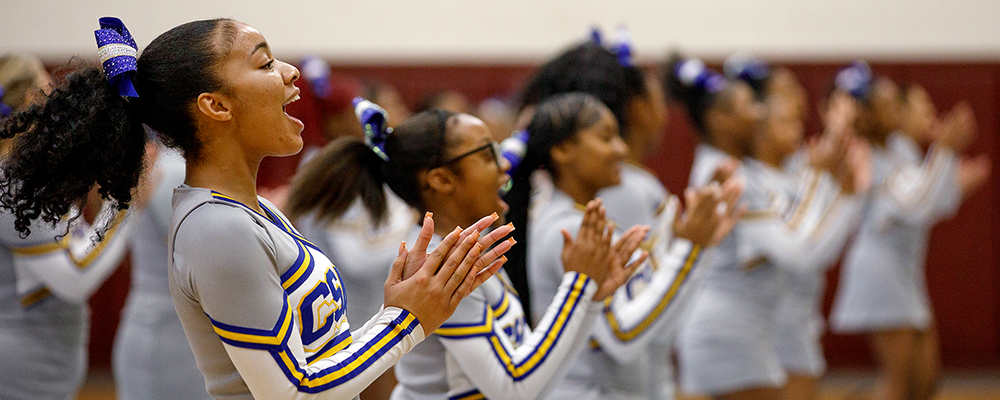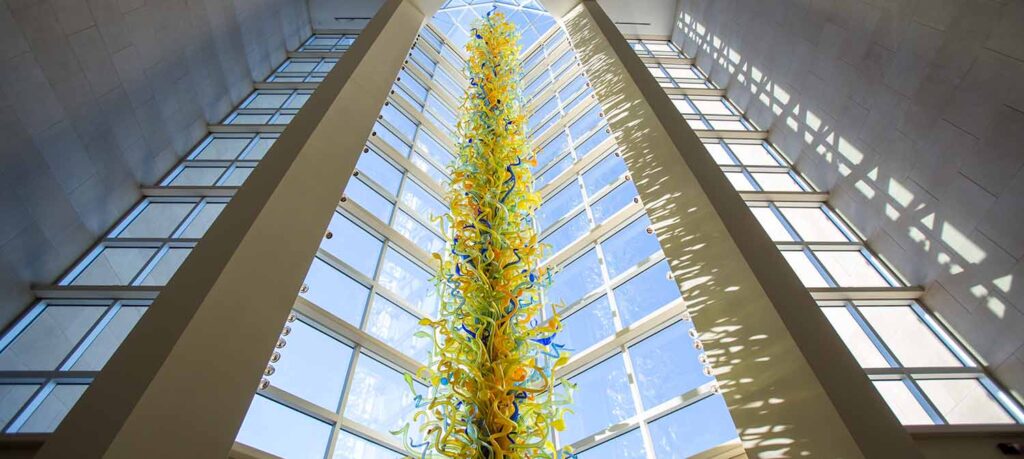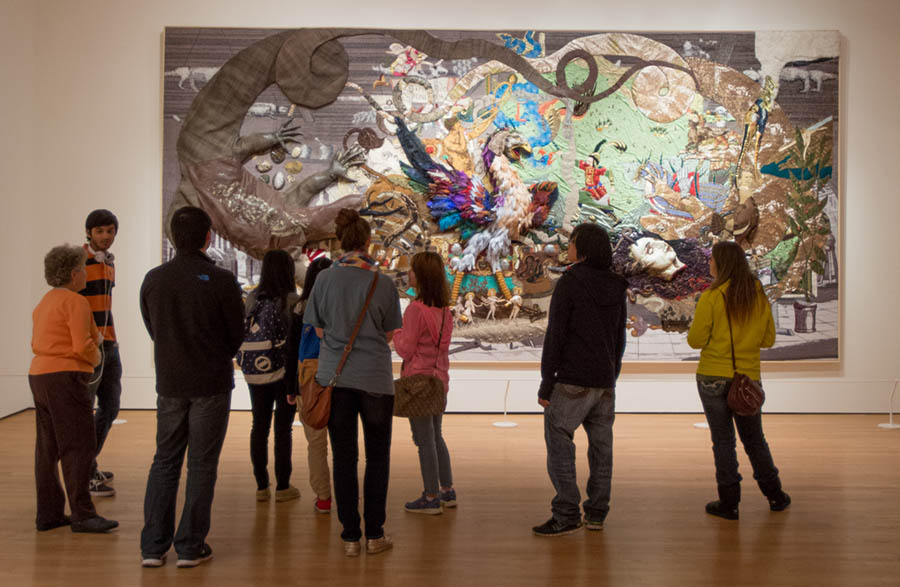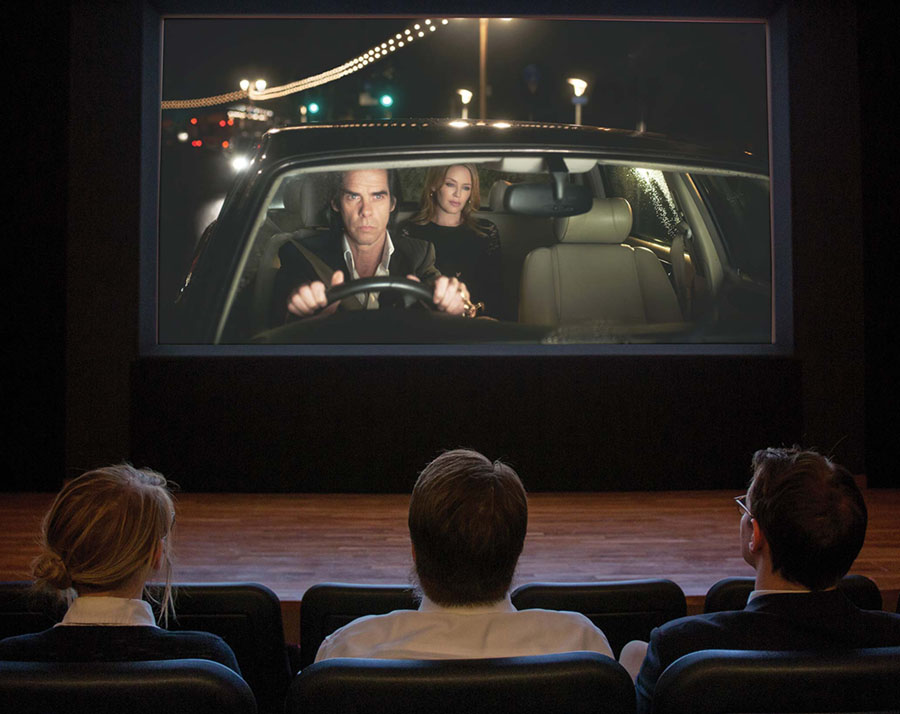

By Jessica Willingham
E. Mike Whittington leans in to get a better look at an intricate and aging sketch, inhales and then whispers a barely audible “Wow.” Around him, temperature-controlled crates flown in from Paris are being carefully unpacked, larger-than-life portraits are being installed, and art curators wheel paintings to their designated locations as assistants arrange sculptures.
Whittington, president of the Oklahoma City Museum of Art (OKCMOA), is admiring a sketch created by 15th century Italian architect and painter Raphael Sanzio da Urbino. Urbino’s work and the work of some of history’s most celebrated artists is set to be featured in a new exhibit at the Oklahoma City Museum of Art – the first stop on the collection’s American tour.
Like Urbino’s sketch, some art comes to visit and some is here to stay. The museum’s permanent collection has 3,000 works that represent more than 400 years of European and American art from the 19th and 20th centuries. The story of the museum’s journey to this place in time is as rich, complex and diverse as the pieces it holds.
One might say the museum’s journey began at the movies.

Its home once near the Oklahoma City Fairgrounds, the museum relocated to downtown Oklahoma City, Oklahoma, in the 1990s. The OKCMOA‘s new home was a long-abandoned 1940s movie palace, the Center Theater. Even after extensive internal and external renovations, and additions to the building, the Art Deco vibe of the old palace still shines through the architecture. The Center Theater’s original box office still stands near the museum’s main entrance. It’s a reminder that even when America’s “greatest generation” was steeped in war, there was still one beloved place of escape – the movies.
“Understanding the building itself is to understand a great deal about what this museum means to this city and for Oklahomans,” Whittington said. “The museum’s relocation downtown, saving this building and repurposing it was a catalyst for downtown development. And it gave the museum the opportunity to create a film program.”
Through a series of grants totaling $2.6 million, the Noble Foundation assisted the OKCMOA in building and maintaining one of the most advanced digital theaters and the only art house cinema in the state – which has been named The Samuel Roberts Noble Theater in honor of its support. Using the existing architecture, the OKCMOA rebuilt the theater and brought the magic of movies back to life.
Before the new building and support from organizations like the Noble Foundation, the museum’s film program consisted of poor-quality screenings, folding lawn chairs, and a small but dedicated following of independent, foreign, and classical film fans, said Bryon Chambers, assistant curator of education at the OKCMOA.
“It was kind of a struggle,” Chambers said.
Today, the 250-seat Noble Theater hosts 335 screenings and 25,000 visitors a year.
With funding from the Noble Foundation, the theater began its first phase of theater Projection Perfection. Since the Noble Theater’s initial construction in the early 2000s, cinema has changed from hard-copy film to a completely digital format. The Projection Perfection campaign will enable the theater to stay within the current trends of the industry and remain a destination for independent film distributors and the next generation of filmmakers. The improvements will bring state-of-the-art digital, visual and audio technology paired with new, plush seating to transform the theater experience for filmgoers and producers alike.
With the creation and advancement of the Noble Theater, future generations of filmmakers no longer have to escape to the Coasts for opportunities and careers in the industry, according to Chambers. The OKCMOA is cultivating the next generation of artists right in the heart of America. University of Oklahoma film students come to the Noble Theater to learn about film narrative, history and production. Every June, the Noble Theater is home to the deadCENTER film festival, the largest film festival in Oklahoma.
“The film program has been an integral part of our maturity, a wonderful symbol of how we celebrate art,” Chambers said. “With the help of the Noble Foundation, we are truly a visual arts center.”
Yes, Whittington certainly admires the age-old sketch, but he appreciates the tremendous growth – up almost 29 percent last year – associated with the variety in programming.
“Our audience is getting younger and becoming more diverse,” Whittington said. “We’re pleased our audience is beginning to reflect the diversity of this community in every sense.”

Every day at the OKCMOA is as uniquely individual as the museum’s signature sculpture: a 76-foot tower of 2,100 pieces of blown glass by Dale Chihuly. Classes, workshops and seasonal camps are hosted throughout the year, and every Thursday night brings the community to the museum’s rooftop for drinks and live music.
“The communities formed around art, agriculture and education are essential to improving life and culture in Oklahoma,” said Mary Kate Wilson, Noble Foundation’s director of philanthropy, engagement and project management. “Our trustees appreciate being part of fostering those connections and supporting cultural growth in our state.”
Those connections are taking place both inside and outside the museum. The OKCMOA fosters community outreach programs for families, adults and children in the surrounding communities.
The museum also partners with organizations throughout the Oklahoma City area to help citizens in need heal through the arts. Children with hearing or vision impairments attend museum-hosted summer camps. OKCMOA works to connect with members of the community who may not be able to visit the museum for medical or health reasons. Enabling all people to experience art within and beyond museum walls is central to the museum’s mission: to enrich lives through the arts.

While the latest exhibition wraps up installment on one floor of the OKCMOA, the deadCENTER film festival is just beginning its preparations for another season. Somewhere in the middle, an entire class of preschoolers holds hands to form a long line, slowly but noisily snaking their way from gallery to gallery.
For each individual who visits, the museum offers something a little bit different – a unique opportunity, a quiet escape, a whimsical adventure. From exquisite French paintings to the excitement of the silver screen, everything at the OKCMOA brings art alive for the thousands of Oklahomans who visit each year.
And Whittington doesn’t take a bit of it for granted, saying “Without the help of the Noble Foundation and organizations like them, none of this would be possible.”
Stay up to date on all the ways the Noble Foundation is helping address agricultural challenges and supporting causes that cultivate good health, support education and build stronger communities.